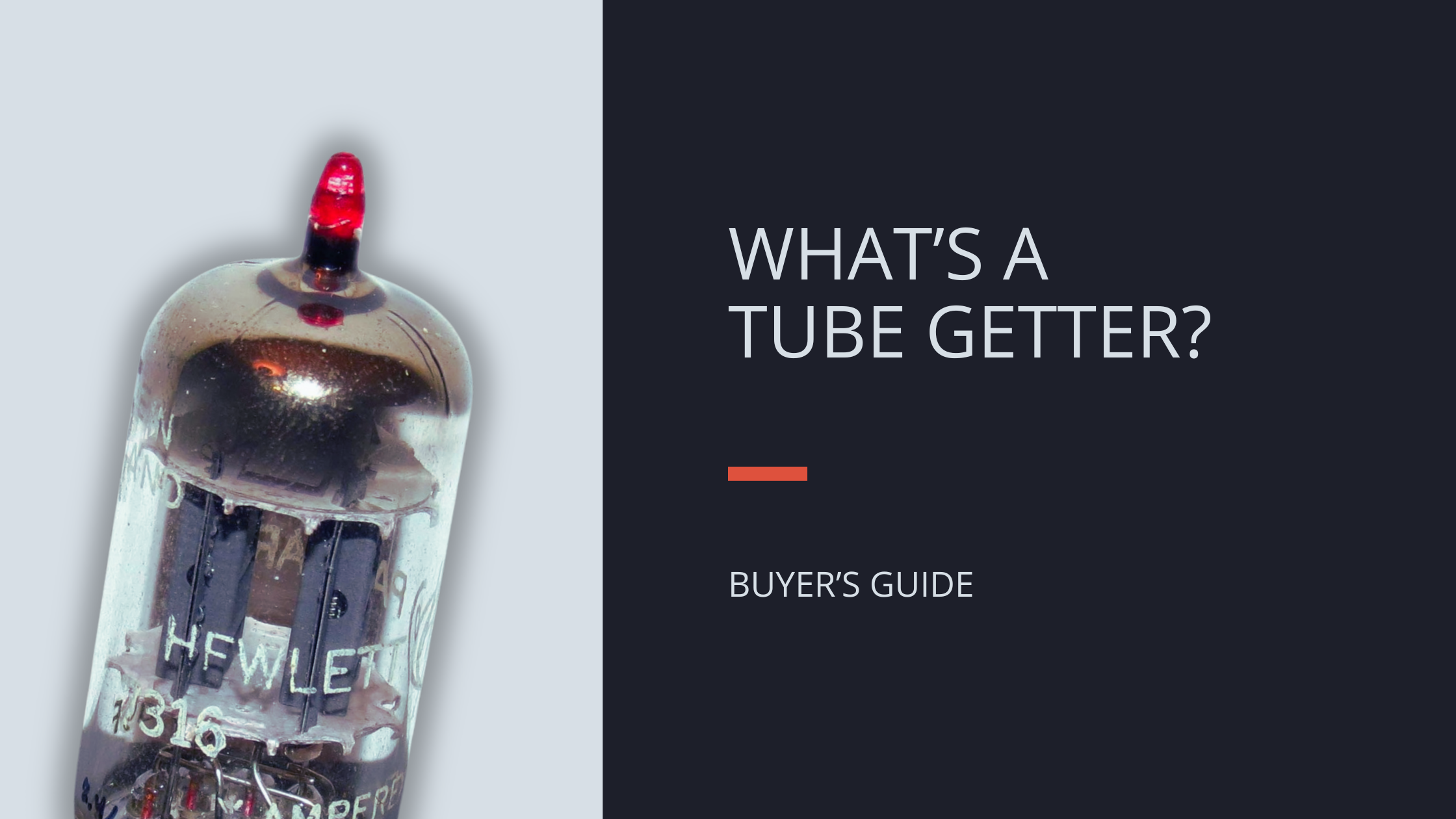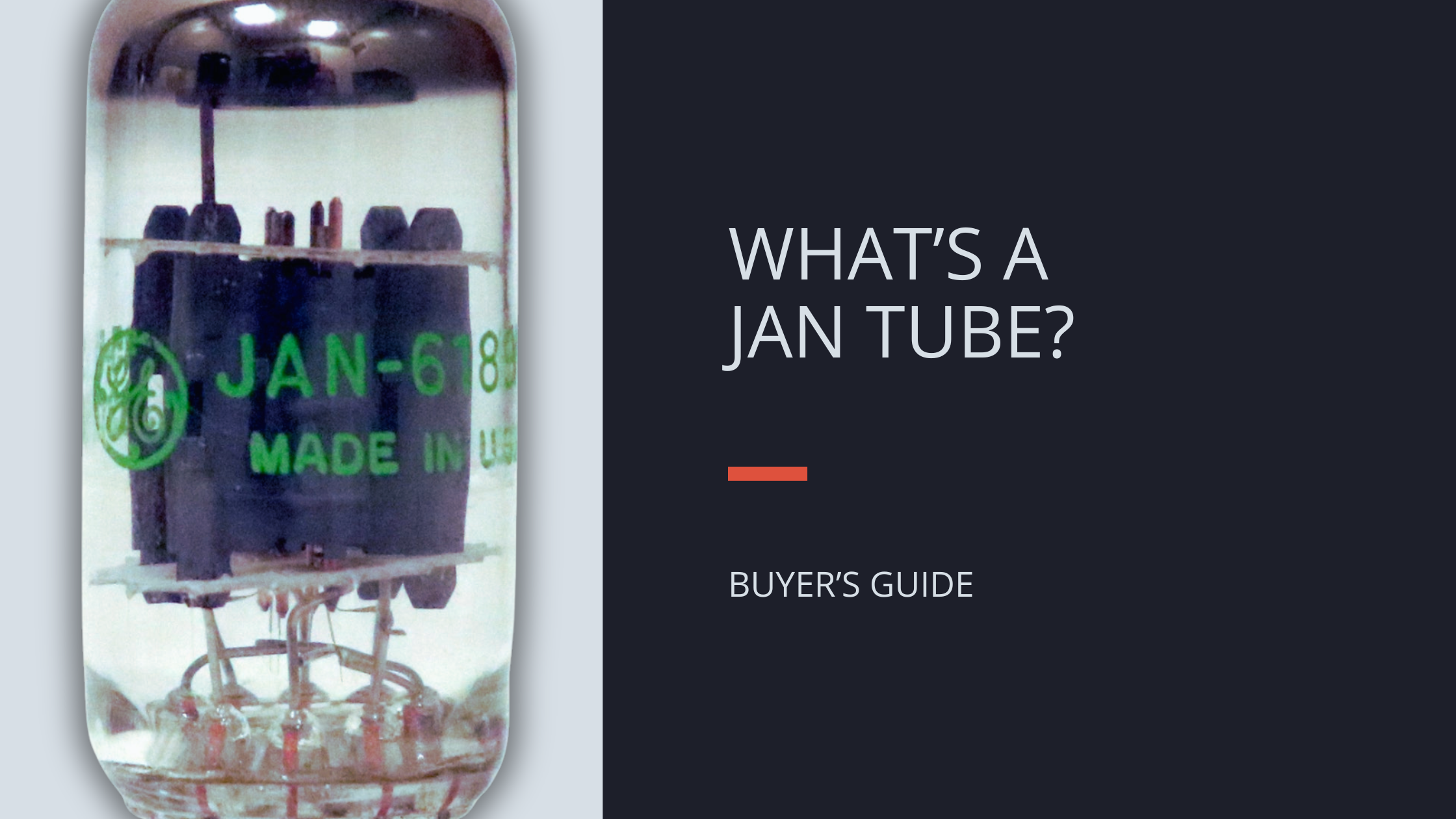
What's a Tube Plate?
How metal shapes sound
A plate is the metal part inside a vacuum tube that collects electrons from the cathode and turns them into an electrical signal.
Why plates matter
The plate, or anode, collects electrons emitted by the cathode. Its geometry determines how those electrons move through the vacuum, how efficiently heat is removed, and how the tube reacts to signal changes.
Subtle differences—black versus grey, long versus short, ribbed versus smooth—change how the tube handles current and vibration. Over decades of production, manufacturers experimented with plate alloys and shapes to balance tone, linearity, and reliability. Those choices live on today in the way we describe and compare tubes.
Common plate types (alphabetical)
Black Plate
Favored by collectors and audiophiles alike. The carbonized coating absorbs stray electrons and smooths the sound, often giving these tubes their signature warmth and harmonic richness. Expect a slightly softer, more musical presentation—perfect for systems that lean bright.
Box Plate
Built like a vault. The enclosed structure adds shielding and linearity, reducing distortion and channel imbalance. If you’re after technical precision, low noise, and tight imaging, box-plate tubes are a smart buy.
Grey Plate
A reliable modern workhorse. The matte-grey finish runs cool and quiet, offering balanced tone across the spectrum. Choose grey plates if you want neutrality, consistency, and long life without chasing vintage rarity.
Long Plate
Open, detailed, and expressive. Long plates tend to sound more spacious, with wider imaging and dynamic reach—but they can be a bit more microphonic. Best for line-level or output stages where detail matters more than isolation.
Ribbed Plate
The ridges stiffen the plate and suppress vibration, keeping the sound tight and focused. Ideal for users who prioritize mechanical stability and consistent tone across matched sets.
Round Plate
Smooth, natural, and musical. The curved shape encourages a gentle, flowing sound that listeners often describe as “organic.” Round-plate tubes tend to shine in systems that favor emotional presentation over measurement.
Short Plate
Compact and quiet. Designed to minimize vibration and microphonics, short plates are perfect for preamps, phono stages, and other sensitive circuits. Choose these when you want reliability and focus over big, open staging.
Slotted Plate
Built for endurance. The vented cutouts help cool the plate and maintain performance under stress. You’ll find these in power tubes that are expected to run long hours—excellent for durability and heat management.
Smooth Plate
Clean, fast, and articulate. The flat surface dissipates heat efficiently and produces a crisp, modern sound signature. If you prefer detail and transparency over warmth, smooth plates are a strong choice.
Square Plate
Balanced and neutral. The squared-off design adds rigidity and uniform current flow, resulting in stable operation and consistent tone. Often used in professional or broadcast tubes—dependable, honest performers.


